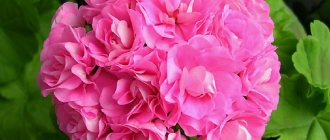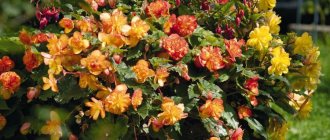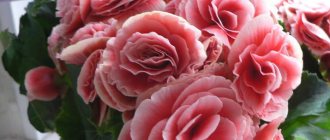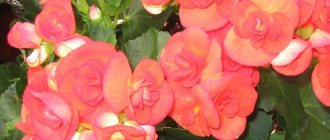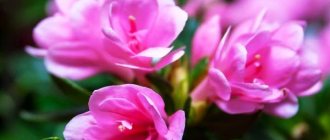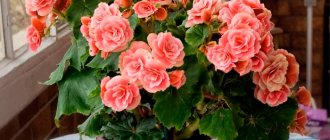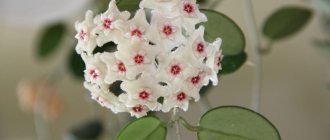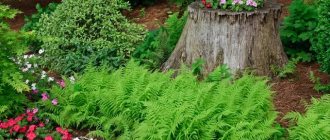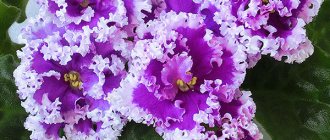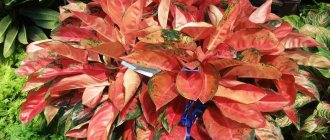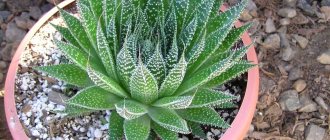Among the hybrid species of begonias, elatior occupies a special place. Bright, lush flowers of regular shape are in many ways reminiscent of chic small roses. They appear in inflorescences, several at a time. Thanks to this, the petals almost completely cover the greenery and create the effect of a beautiful flower carpet.
That is why begonia elatior is a real favorite among flower growers: it is planted both in apartments and in city flower beds.
Botanical description of the plant
This type of begonia belongs to the perennial shrubby plants. It usually grows in height up to 30-45 cm. The leaves of elatior have quite original carved shapes, in some cases they even resemble hearts with unequal halves. The stems are quite fleshy, the foliage is a rich green shade, against which the flowers contrast very harmoniously:
- red;
- white;
- cream;
- yellow;
- orange;
- pink;
- coral
Depending on the specific size of the stem, three groups of begonia elatior varieties are distinguished:
- short (about 20-25 cm);
- medium height (25-35 cm);
- tall (35-45 cm).
Reproduction
Begonia Elatior reproduces well:
- Seeds are a labor-intensive process for home use. It will take at least a year to grow plants, and all this time you will have to carefully monitor humidity, temperature and light.
- Apical cuttings are a favorite method of gardeners. Begonia Elatior is very easily propagated by cuttings. It is enough to cut the stems to a length of 7 cm and place them in water, moss, and vermiculite. After 1-2 months, the roots begin to grow.
- Leaf cuttings. The veins of the leaf plate are cut and placed with cuts on moistened moss and sawdust. After a month, roots and small plants will appear in the area of the cuts.
Varieties of begonia elatior
Here are the most interesting varieties of begonia elatior, which are often used as indoor plants:
- Baladin grows up to 30 cm, but produces flower stalks of different heights. This creates an interesting multi-tiered effect - some flowers grow on top of others. From afar, such a bush resembles a bouquet of roses. And rich bright colors always attract attention and enliven the space.
Representatives of the Baladin variety have every chance of becoming an original gift for a lovely lady - such a plant really resembles a bouquet. But this bouquet will not dry out even for several years, and it will produce flowers more than once a year.
- In distant and romantic England, another interesting variety of begonia elatior called Borias . It produces delicate flowers in pink and coral colors. And even in the photo their similarity with classic roses is striking. In this sense, elatior is truly a royal flower.
And if you put several of these pots in a row, eternal spring will come on the windowsill.
And single bushes are quite self-sufficient. And the whole point is that they produce very beautiful, rather large flowers. Needless to say, such a gift will be no less pleasant than the usual roses or tulips!
- And there is another literally bright representative of the glorious Elatior family. the Grace variety , which was developed in Southeast Asia. It grows no more than 35 cm. But it produces a lot of red flowers, which bloom several times a year. And most importantly, they do not fade within 1-2, sometimes 3 months. Needless to say, flowers are again very similar to roses, only they live much longer.
There are also varieties with beautiful orange flowers - they can create a spring atmosphere in the apartment even on long winter evenings.
Reviews
Apparently, flower growers really like Elatior begonia. Spectacular culture. Bright, juicy and odorless (a plus for allergy sufferers). An excellent pot and balcony plant, requiring minimal care, but so decorative that one can make a balcony noticeable. Opinions differ greatly about unpretentiousness: some consider it completely unpretentious, others call it a capricious plant, but do not give up trying to make friends with it.
Particularly successful flower growers manage to prolong the flowering of an old plant for up to two years by pruning the bush in time (and using cuttings to produce new plants). Some note that their plants bloom even in a draft or on a northern window, and require no care at all, while still being covered with flowers. Problems described include: rapid death of the plant, flowers falling off immediately after purchase, problems with propagation by leaves or cuttings.
How to care for begonia elatior: 10 flowering secrets
Caring for any plant is based on one important rule: for the flower you need to create conditions that are as close as possible to its natural habitat. In the case of begonia elatior, it is important to remember that the birthplace of this flower is the distant tropics.
This means that the plant is accustomed to eternal summer, fairly abundant watering and fertile soils. But everything is good in moderation. Therefore, in order to achieve lush and stable flowering, you should pay attention to the following tips:
- It is very important to ensure optimal watering . It should be quite abundant - as soon as the upper half of the soil has dried, a new portion of settled water should be added. However, overfilling is even worse - the water in the pan should not stagnate too much.
- Moist air is another rule for caring for begonia elatior at home. Spraying the leaves and especially the flowers is unacceptable, but placing a bowl of water next to the plant or placing a damp towel is a mandatory measure in the summer.
- Lighting should be diffused , but at the same time bright. This is very easy to achieve - you can simply place the pot behind the tulle, and in the summer, cover the lower part of the window with a sheet of white paper. Elatior, unlike many other types of begonias, does not need additional lighting even in cloudy weather or in the autumn-winter period.
- The plant is located away from drafts and heating radiators - cold and dry, hot air are equally harmful to begonias.
- The optimal temperature is slightly lower than normal room temperature: +18°C...+20°C . The air should not cool below +16°C - the plant will shed its buds and may even get sick.
- During the flowering period (from the beginning of the formation of buds until the flowers wither), complex mineral fertilizers are used . They are taken in small quantities (compared to the instructions in the instructions, 1.5-2 times less), since begonia does not like soil salinity. It is better not to feed with organic matter - due to nitrogenous substances, the plant loses its vigor, and the flowers lose their visual appeal.
- For planting, you can take any pot, but the soil is selected from peat, leaf and greenhouse humus (in equal quantities). You can add a little river sand and perlite. The soil must be loose and airy.
- Almost every year, a young plant is transplanted into a new pot , which is 4-5 cm in diameter larger than the previous pot. And it is not advisable to disturb a flower that is already 4 years old (or more).
- Periodically, faded leaves should be removed , as well as flower stalks after the petals have withered. This is done with a sharp knife, and the cut areas are covered with wood ash.
- And one more rule for caring for begonia elatior at home is regular inspection for the presence of diseases and the appearance of pests, as shown in the photo (using the example of gray rot).
Care during the rest period
Proper wintering for all plants is the key to active growth and flowering in the warm season. The main thing you need to pay attention to is the temperature and watering regime.
The temperature must be maintained within 18 - 20°C; if the temperature drops, the begonia will get frostbite and die. Sudden temperature changes are contraindicated. Reduce watering by half and stop spraying.
Additional lighting is not required in winter; daylight hours are sufficient.
Reproduction at home in different ways
This flower is propagated by seeds, cuttings, and also by simply dividing the mother bush into several daughter bushes. The simplest methods of propagating begonia elatior at home are described in detail and clearly in the video.
But growing begonia elatior from seeds is somewhat more difficult, and the rules for caring for seedlings are not simple. However, this method of reproduction is also available.
It is better to purchase seed material in a specialized store. They sell seeds in 2 forms:
- Regular (unprocessed).
- Granulated (in the form of dragees) - they are easier to work with.
Regardless of the type of material, the planting technology is the same (planted at the very beginning of spring):
- The seeds are pre-treated with a 1% solution of potassium permanganate for 30-45 minutes.
- They are then washed and planted in a pre-moistened peat tablet.
- Each tablet is placed on a tray, which is covered with polyethylene or glass.
- Then water is constantly added to the tray so that the surface of the tablet is always moderately moist. The room temperature is at least 20-22oC.
- Normally, the first shoots appear after 2-3 weeks. After the formation of the third leaf, a pick is made.
- They dive again 8 weeks after emergence. At the same time, the sprouts are planted in pots.
Other important points of care
Begonia Elatior's shoots can stretch out unsightly, especially with short daylight hours, so the plant is pinched several times to form a compact, neat bush.
Feed 3-4 times per season: with potassium fertilizer at weekly intervals almost immediately after planting (to gain green mass), then with complex fertilizer for flowering plants.
When cold weather sets in, plants from open ground can be transplanted into a pot and stored in the room.
Diseases and pests of begonia elatior
Disturbances in the development of begonia elatior are associated mainly with improper maintenance conditions and infectious pathogens of flower diseases.
The most common ones include:
| external sign | cause | solution |
| the leaves dry out at the edges and begin to curl | dry and hot air | move to a cooler place, periodically humidify the air |
| leaves fall off or turn yellow and droop | too cold | move to a warmer place |
| the foliage has drooped | polluted air or lack of moisture | take the pot to another room, water it thoroughly (if the soil is dry) |
| leaves grow small, flowers do not form or bloom rarely | lack of fertilizer | fertilize the soil using organic or mineral fertilizers |
| leaves fade, cobwebs are found | spider mite activity | use an insecticide or onion infusion (more details below) |
| powdery coating with greenish and brown tints | activity of gray mold fungus | spray with fungicide (benomyl) according to instructions and remove the pot to a dry, cooler place |
| white spots of powdery consistency | activity of powdery mildew fungus | |
| the roots turn black and rot | black root rot fungus activity | stop watering, spray with fungicide, remove to a drier place |
| rot on the surface of leaves and flowers | waterlogging | reduce watering, do not allow moisture to get on the begonia itself when spraying |
| leaves are deformed, yellow spots appear on the surface | activity of cucumber mosaic virus | destroy the flower, disinfect the pot, replace the soil |
| the leaves have lost color, sagging is visible on the roots | nematode activity |
As for begonia pests, the most dangerous are:
- The spider mite is a round-shaped insect, bright red in color, less than 1 mm long. They look like numerous bright dots on the surface of leaves and stems. Leaves cobwebs throughout the plant.
- Aphids have different colors (green, gray, brown), the body shape is round, 2-3 mm long. They look like numerous gray dots.
They need to be dealt with immediately after detection. For this purpose, special insecticides are used, which can be purchased at a specialty store:
- thiophos;
- karbofos;
- actellik;
- neoron;
- fitoverm;
- fufanon.
They act exactly according to the instructions. You can also use a home remedy based on regular onions (with brown peel):
- The onion is chopped very finely or passed through a meat grinder.
- Take a full teaspoon (half a tablespoon) and leave for 1 week in a liter of water.
- Strain and spray the foliage and stems until the insects are completely destroyed.
PREVENTION ADVICE
The foliage and especially the stems of the plant hidden under the bush must be carefully inspected for the presence of pests and other damage. The sooner you start fighting them, the higher the chances of success.
Difficulties and problems
Judging by the reviews, they are not uncommon:
- Begonia is losing its leaves. Most likely the plant does not have enough moisture. Both in the pot and in the air.
- Pale leaves, elongated stems, weak flowering - lack of light.
- Dark spots on stems and leaves. Probably a fungal disease. Remove all affected parts of the plant and treat with fungicides.
- Curled leaves, dots, spots, suppressed growth - spider mites (begonias are also often affected by aphids). To get rid of them, use either a commercial insecticide or a soap solution.
- White coating on stems or leaves is powdery mildew. Prevention of its occurrence: absence of temperature changes and sufficient air humidity. The plant is treated with fungicides or sulfur.
Reviews from gardeners about begonia elatior
In general, flower growers are very pleased with representatives of the Begonia elatior species. As a rule, such flowers are purchased in disposable pots, then transplanted into durable containers and sprayed with fungicide to avoid the development of fungi and bacteria.
Begonia owners note that the plant pleases with its beautiful, bright flowers almost all year round.
Of course, reviewers also talk about certain shortcomings. Basically, gardeners describe how the plant begins to quickly turn yellow and wilt due to lack of watering or spraying the leaves with a spray bottle. It is often pointed out that Elatior is quite difficult to care for.
However, it is worth keeping in mind that beauty almost always requires sacrifice. And of course, in the case of such an interesting indoor plant, the word “victim” is inappropriate.
Moderate watering, sufficient heating and lighting are the basic rules for success. You should frequently inspect your pet for pests or signs of disease. Otherwise, caring for begonia elatior at home is as simple as caring for less demanding plants.
Features of begonia eliator
Begonia is an ornamental plant that is a perennial. In nature, it is found in the highlands of tropical hot forests. This plant has a characteristic feature - a pronounced asymmetry of the leaf plates. The flowers of this plant are lush and highly decorative. This plant is cultivated both indoors and in the garden.
The genus received its name in honor of its discoverer, Begon. Under natural conditions, this plant was found in South America, India and Africa. Begonia was first discovered and described in the Antilles. At the moment, there are only 6 species of this plant, but thanks to the efforts of breeders, more than one thousand different varieties have appeared. But among all this diversity there are no tall and medium-growing varieties. The bushes are quite low, and therefore they are most often used to decorate rooms. This ornamental plant is also often used as a climbing plant. Begonia eliator is a spectacular bush with lush flowers. This explains the high popularity of this plant.
Scientists have found that such a flower is capable of purifying the air from pathogenic microbes. It releases phytoncides that most effectively fight staphylococcus. It is because of this that you can increasingly see begonia in kindergartens and medical institutions.
The most vigorous varieties of this plant reach a height of 25 to 37 centimeters. Medium-sized varieties include those varieties whose height varies from 15 to 18 centimeters. Low-growing bushes have a height of only 8–15 centimeters. Breeders managed to develop varieties:
- with bushy structure;
- with upright shoots;
- with climbing stems.
Even a variety has been bred that can bloom all year round, but in mid-latitudes it cannot be cultivated in open ground. This plant needs warmth throughout the year.
Begonia is divided into three main categories:
- bush - has no pronounced specificity;
- foliage-decorative - leaf plates are medium or large, and they are decorated with wide stripes;
- tuberous - in this group, representatives differ from each other only in flowers and shoots.
Interestingly, this plant is capable of forming a different root system. And what kind of root system the bush will have depends on the growing conditions. For example, when begonia is grown outdoors, it forms tubers. A bush growing indoors develops fibrous or rhizomatous roots. Those specimens that form tubers grow the most powerful and tall shoots. And flowers with fibrous or rhizomatous root systems are ideal for planting in decorative baskets.
My BEGONIA ELATIOR and others.
How to grow begonia in flowerpots at the dacha
Begonia in pots at the dacha looks especially attractive. In addition, its location can be constantly changed, modifying the overall appearance of the site.
Important : when planting tubers directly in a pot, you do not have to dig them up and replant them for the winter.
To grow garden begonia in hills it is enough:
- Prepare the flowerpot and soil.
- Make drainage at the bottom.
- Cover the ground.
- Plant a flower in it.
- Compact and water the soil.
Bloom
In order for elatior to bloom long and profusely, an artificial “short day” - the duration of daylight hours is reduced to 9 hours , covering the plant with black plastic film .
This procedure, carried out over two weeks , promotes the formation of buds.
To prevent the stems from stretching during this time, use growth inhibitors or pinch the shoots.
Then the daylight hours are increased again to 16 hours - additional lighting may be needed.
As a result, begonia blooms in about 2 months.
It should also be noted that a plant that has once bloomed “in full” - long, abundantly and for a long time - takes a long time to recover and is unlikely to bloom again with the same intensity.
What soil is needed for Rex begonia
The royal species was found at the end of the 19th century. Reaches one and a half meters in height. Over time, the stem begins to creep. Different types of plants have many different foliage colors. Does not tolerate temperatures above 27 degrees. The optimal temperature range is from 18 to 26 degrees. Prefers diffused sunlight. Watering is done as the soil dries.
It has many hybrids, bred from an Indian plant. For the royal begonia flower, the soil for planting should be slightly or neutrally acidic. The earth must have good water and oxygen permeability. Pure humus and peat are not suitable for planting. The soil mixture should contain deciduous soil, peat and coarse sand. The ratio of components is 2:1:1.
How to use begonia in the garden landscape
With the help of garden begonia, spectacular and beautiful flower beds are created. It combines harmoniously with various plants, such as lobelia, iberis, and surfinia. It looks very original when combined with begonias, asters, cineraria and lilies.
These ornamental plants with varied and bright buds are planted in rockeries, on alpine hills, in mixborders, in open areas, terraces, and balconies.
Transfer
It is permissible to replant the bush after flowering has completed. The soil is changed annually upon reaching the age of four, then the flower does not need it. Begonia rhizomes feel comfortable in small containers (they quickly fill the light soil of the pot); a large pot is not needed.
There should be holes at the bottom of the container for moisture to escape. The lowest layer is drainage; sphagnum or similar material is preferred. Next in line, calcined earth is poured.
Changing a pot for begonia Elatior
The last step is to transplant the clod of earth with the roots of the plant. The free space around it is filled with earth.
Note! When transplanting, accuracy is important. Begonia roots are fragile and sensitive; damage to the underground part will affect the growth and development of flowers.
Useful video
In this video you can learn more about plant care:
If you find an error, please select a piece of text and press Ctrl+Enter.
A compact bush strewn with bright flowers of various shades is a real replacement for quickly fading bouquets.
This incredibly beautiful plant is the Elatior begonia variety.
It can bloom twice a year, creating a cozy atmosphere in the house and putting its owners in a positive mood.
In this article we will look at how this plant reproduces and how difficult it is to care for it.
Types of begonias for growing in the garden
Begonia in a flowerbed looks very impressive. Despite the huge variety of its species, gardeners plant only a few popular species and varieties in private designs.
Everblooming
Miniature begonias, up to 20 cm high. They are widely used in arranging flower beds, as they are completely unpretentious in care, bloom profusely and for a long time in various colors. Their leaves are glossy and oval, dark green or brown in color.
Signs and superstitions
Rumor has not endowed Begonia Elatior with miraculous powers, but there is an unspoken rule: flowers are often placed in educational institutions, in offices associated with mental work. There is an opinion that the plant helps in painstaking work, supports mental clarity and creative thinking of employees.
The reason why begonia has gained such a reputation is because it acts as a natural filter, purifying and humidifying the air. Elatior is an amazing example of combining benefits and a pleasant appearance, as the plant decorates the environment and allows you to breathe easily and naturally.
Soil for begonia universal composition
The flower is not whimsical in terms of substrate. But what kind of soil does begonia like? The soil mixture should consist of: coarse-grained and fine-grained river sand, peat, turf and leaf soil. When preparing the soil with their own hands, flower growers add minerals for flowering plants.
Attention! If the substrate is too acidic, the root system will stop growing.
The soil for begonias should be slightly acidic or neutral in acidity. The soil mixture should consist of peat, turf and river sand. Contain beneficial substances in the composition. To do this, use store-bought fertilizers for decorative flowering varieties.
Bush formation
Shaping with flowers
There is an opinion that Elatior begonia blooms better in winter, but I disagree with this: my begonia blooms wonderfully all year round. However, in summer, when the temperature rises above 28 ⁰C, begonia can shed its flowers.
By the way, on one Elatior begonia bush both female (simple) and male (double) flowers are formed. On young plants, I advise removing female flowers, since it is in them that the seeds ripen, and this takes too much strength and nutrition from the plant. Moreover, we don’t need seeds now: at this stage it is much more important to form a correct, beautiful, lush bush.
For example, I remove both male and female flowers on young plants in autumn and winter. In spring and summer, I do not pick off the female flowers, because they, together with the male ones, create the effect of mass flowering. If you do not remove the female flowers, the begonia will not bush and its stems will become elongated.
Removal should be started only when the plant takes root in the soil and grows green mass.
Formation by shoots
To prevent the stems from stretching and stimulate the begonia to tiller, I not only pick off its flowers, but also pincer the plant, that is, I pinch the top when the stem reaches a height of 10-15 cm. This procedure will force the begonia to release side shoots.
My begonias do not grow, primarily because I do not grow them from apical cuttings. In the past, when I rooted the tops, the cuttings would invariably stretch out and I would have to pinch them back after rooting. Then I began to take cuttings from the side shoots, which, after rooting, bush on their own, without my intervention.
If you are rooting the top, pinch it in time, without waiting for the plant to stretch out and the formation of the bush will become a problem.
